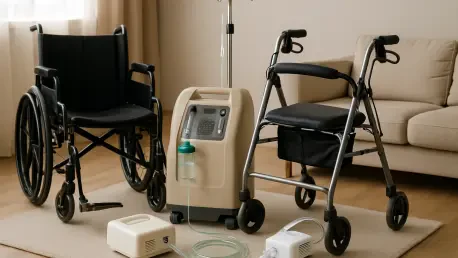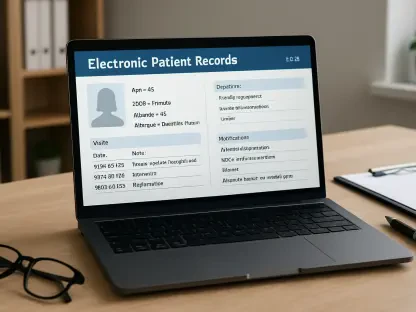In an era where healthcare delivery is rapidly evolving, strategic partnerships between home medical equipment (HME) providers and health systems are becoming essential for improving patient outcomes and navigating complex reimbursement landscapes. Quipt Home Medical Corp., a leading nationwide supplier based in Wilder, Kentucky, has taken a significant step forward with a groundbreaking joint venture that promises to reshape its footprint in the Midwest. Announced on August 12, this collaboration with Hart Medical Equipment and several prominent health systems not only amplifies Quipt’s operational reach but also sets a new standard for integrated care transitions. With a 60% ownership stake in Hart Medical, alongside key partners like Henry Ford Health and McLaren Health Care, Quipt is poised to tap into vital markets in Michigan and Ohio. This move underscores a broader industry trend toward value-based care, where seamless hospital-to-home transitions are paramount for both providers and patients.
Expanding Market Reach Through Strategic Alliances
Strengthening Midwest Footprint
Quipt’s joint venture with Hart Medical Equipment marks a pivotal expansion into the Midwest, particularly in the strategically important markets of Michigan and Ohio. Hart Medical operates 29 branch offices across these states, serving as a well-established HME provider with deep roots in the region. This partnership grants Quipt immediate access to a robust network that supports approximately 67,000 patients monthly, a significant boost to its operational scale. The collaboration with major health systems, including Blanchard Valley Health System and Wood County Hospital, further solidifies Quipt’s presence by embedding its services within trusted local healthcare frameworks. By aligning with these entities, Quipt can leverage existing relationships to enhance service delivery at critical care transition points, ensuring patients receive timely and effective support after hospital discharge. This strategic entry into new territories not only broadens Quipt’s geographic reach but also positions it as a key player in a competitive regional market.
Financial and Operational Scale
The financial implications of this joint venture are substantial, with Quipt’s 60% ownership stake in Hart Medical valued between $17 million and $18 million. Hart Medical itself reported roughly $60 million in revenue for the 12-month period ending in June of the current year, reflecting its strong market position and operational capacity. This deal enhances Quipt’s financial standing while integrating a high-performing entity into its broader platform. Operationally, the partnership allows Quipt to tap into Hart’s established infrastructure, which includes affiliations with over 19 hospitals and care facilities across the Midwest. Such connections are vital for streamlining patient care processes, particularly in discharge planning, where timing and coordination are critical. By combining resources and expertise, Quipt can scale its operations more efficiently, reducing redundancies and improving service quality. This financial and operational synergy underscores the transformative potential of the partnership for Quipt’s long-term growth strategy.
Enhancing Patient Care Through Integrated Models
Embedding Into Hospital Discharge Processes
A core component of Quipt’s strategy with this joint venture is its deep integration into hospital discharge processes, a crucial juncture for patient care. Hart Medical’s existing relationships with numerous health systems enable Quipt to play a direct role in care coordination, ensuring patients transition smoothly from hospital to home with the necessary equipment and support. This embedded approach aligns with the industry’s shift toward value-based care, where managing risk and improving outcomes are top priorities. By positioning itself within these critical workflows, Quipt can address gaps in care delivery, reduce readmission rates, and enhance patient satisfaction. Statements from leadership on both sides highlight a shared commitment to post-discharge support, with Quipt’s CEO emphasizing the added depth this brings to their operations. This focus on integration not only strengthens Quipt’s service network but also sets a precedent for how HME providers can collaborate with health systems to prioritize patient needs.
Building a Replicable Growth Model
Beyond immediate market gains, this partnership serves as a blueprint for Quipt’s future expansion efforts nationwide. The joint venture structure, which balances Quipt’s majority ownership with input from Hart Medical’s leadership and health system partners, fosters operational cohesion while allowing for localized expertise. This model is designed to be scalable, enabling Quipt to replicate similar alliances in other regions with tailored adjustments. The emphasis on collaboration reflects an understanding of the complexities in modern healthcare delivery, where no single entity can address all challenges alone. By creating a framework that prioritizes strategic alignment and shared goals, Quipt positions itself as a leader in integrating HME services with broader healthcare ecosystems. This forward-thinking approach not only enhances its competitive edge but also contributes to industry-wide advancements in managing patient transitions. The success of this model could inspire similar partnerships, driving innovation across the sector.
Reflecting on a Transformative Collaboration
Looking back, the joint venture between Quipt Home Medical Corp. and Hart Medical Equipment, alongside key health systems, stood as a defining moment in bolstering HME presence in the Midwest. The immediate access to Michigan and Ohio markets, coupled with strengthened ties to over 19 hospitals, marked a significant stride in operational reach. Moving forward, the focus should remain on refining these integrated care models to further improve patient outcomes during critical transitions. Healthcare stakeholders might consider how such partnerships can be adapted to other regions, addressing unique local challenges while maintaining a commitment to value-based care. Additionally, ongoing evaluation of financial and operational synergies will be essential to ensure sustained growth. This collaboration highlighted the power of strategic alliances in navigating a shifting reimbursement landscape, offering a compelling example for future initiatives to build upon.









